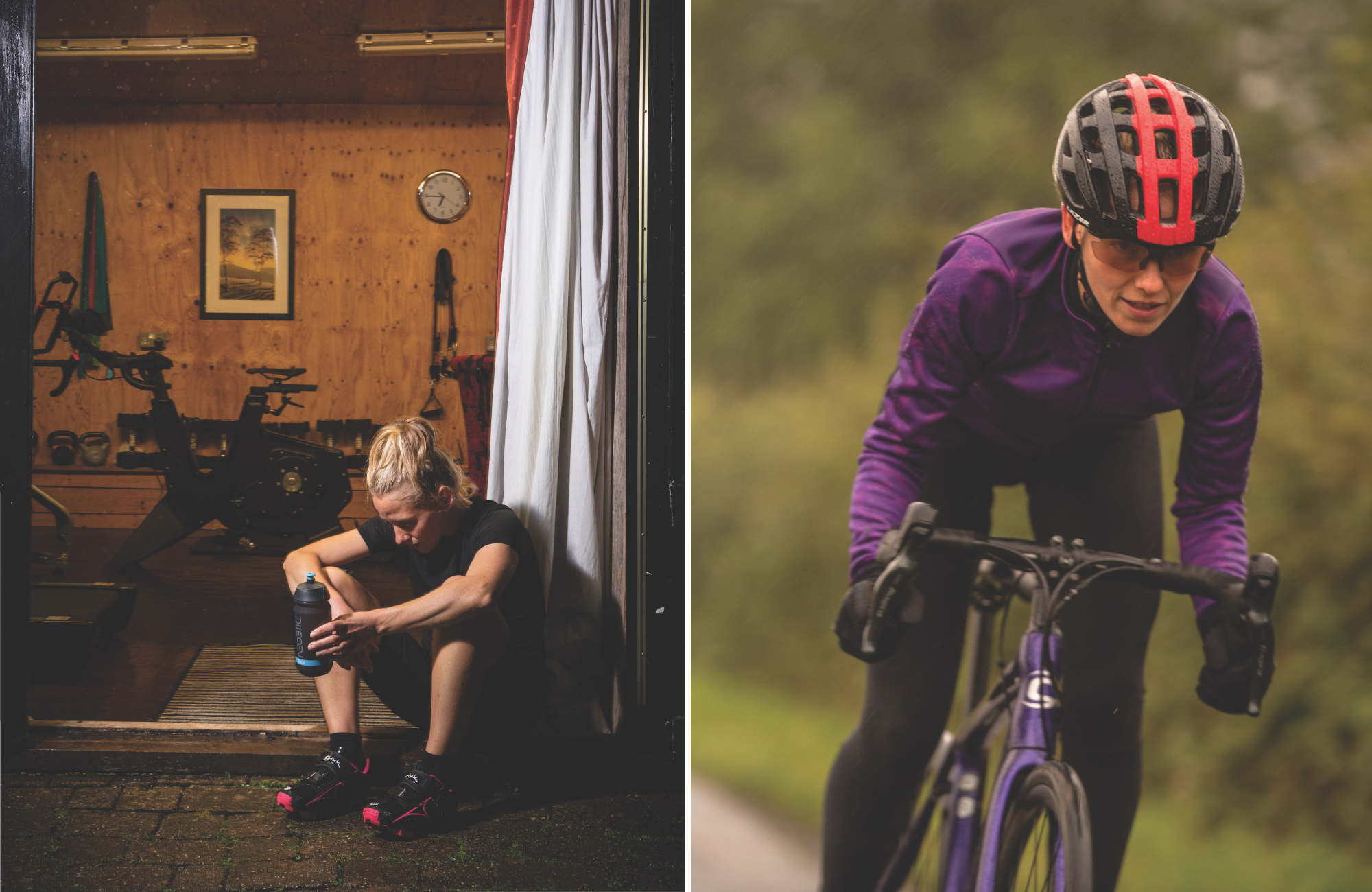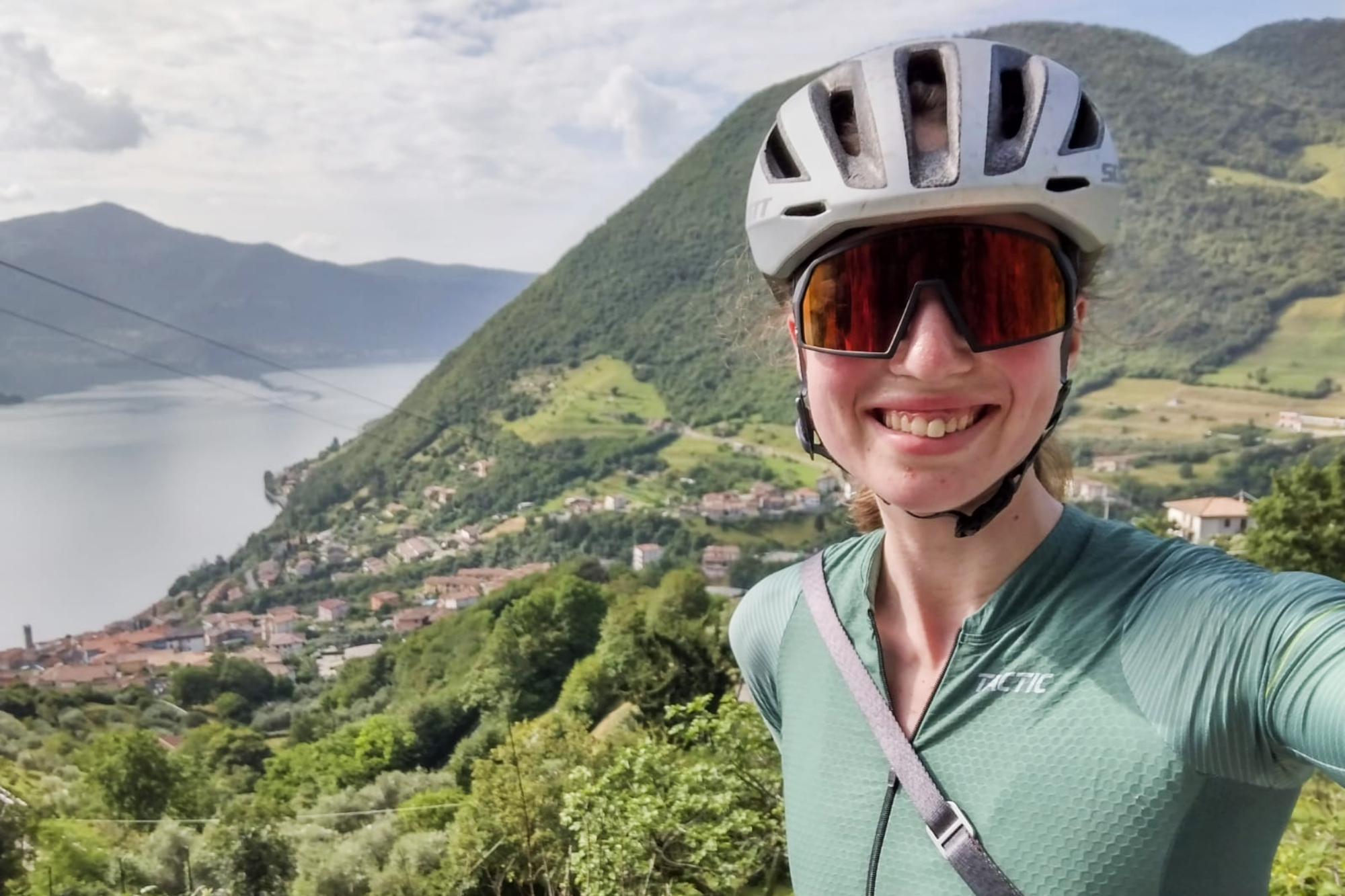Should I do my hard sessions outdoors?
As daylight hours shorten and temperatures fall, Anna Marie Hughes assesses whether it’s really necessary to keep doing high-intensity sessions outdoors


(Daniel Gould)
Let’s admit it, riding outdoors is becoming progressively less appealing – while the turbo or smart-trainer becomes strangely alluring.
Not wanting to be labelled ‘soft’ or a fair-weather rider, the logical move is to start hammering out your hard sessions indoors; you can hit your interval targets far more accurately and you won’t be interrupted by road furniture, inclement weather or inconsiderate drivers. In terms of training benefit, is it OK to bring your intervals indoors until spring, or should you carry on doing at least some of your hard riding out in the real world?
If your season’s goal is to do well in outdoor races or events, it’s obvious that some practice is needed out on the roads. But can this be ticked off solely with the weekly club run at a chatty pace? Opting for the indoor pain-cave for interval sessions may seem a logical choice, but is it for this high-quality work that it matters most to train on the roads, i.e. replicating the environment of your targeted event? It’s time to find out.
The argument for outdoors
With power meters, heart rate monitors and head units track your every pedal stroke, it’s tempting to assume you have to follow sessions to the letter to get the full benefit. However, the idea that there’s a magic combination of effort and recovery is misguided – human physiology is more complicated than that.
It’s important to think about the training benefits the interval is targeting and how the resultant fitness will help you in your event. For instance, the reason to improve your one-minute power is to help shut down or make attacks. But these efforts aren’t going to be exactly 60 seconds at 140 per cent of your FTP – they’ll be unpredictable.
>>> Subscriptions deals for Cycling Weekly magazine
The latest race content, interviews, features, reviews and expert buying guides, direct to your inbox!
Everesting world record holder Ronan McLaughlin of Panache Coaching suggests using the natural terrain outside to make your efforts more like realistic race simulation.
“The main thing is that you are around the target, in a sensible ballpark. If you are doing an effort up a hill and it’s only supposed to be 20 seconds, keep going for 30 and crest it. Not only does this improve your ability to push over the top of hills, it also improves your ability to cope with intervals of differing lengths – as you’d experience in a sportive or race.”
Fellow Irish cyclist Imogen Cotter, who rides for the Belgium outfit Keukens Redant Cycling Team, values riding outdoors even more after being forced to train on the turbo through the spring. Owing to Ireland’s Covid-19 restrictions, the 27-year-old was limited to keeping within a 2km radius of her home, which made outdoor sessions impracticable.
“I find you get more bang for your buck outdoors. Even though I was perhaps able to push harder indoors, I still lost fitness over lockdown. It just doesn’t quite replicate road riding.” Since moving all her hard sessions outdoors, Cotter has found the holistic experience has boosted her racing performance. Little touches including a bell to warn pedestrians has helped keep interruptions to a minimum on Belgium’s canal paths.

Beyond training to put out more dynamic efforts, it is important to gain the experience and knowledge of how to pace yourself correctly, accounting for the varying demands of headwinds and changing gradients. McLaughlin trains his riders to understand the feeling of different efforts by asking them to cover up their power numbers and do the hard sessions on feel alone.
“Getting riders used to pacing an effort stops them becoming a slave to their power numbers,” says McLaughlin. “This really matters in time trials or attacking for the win at the end of a race – a power meter could hold you back from your best result.”
Riding on feel, rather than numbers, has been proven a winning technique by professionals. Tom Dumoulin famously said, “I thought my power meter was wrong” when he ignored his phenomenal readings while storming to victory at the 2017 World Championships elite men’s time trial. More recently, Tadej Pogačar rode without a power meter to win the 2020 Tour de France stage 20 time trial, defying the odds to overturn Primož Roglič’s 57-second lead in the GC.
Perhaps the most fundamental benefit of riding outdoors is how it sharpens your bike control. You may think that zipping down the descents on outdoor endurance rides means you’re keeping your handling skills up to scratch, but there are other aspects that are not practiced by those kinds of drills. Some bike-handling deficiencies only become apparent when you are riding at a high intensity outdoors.
Coach Alex Welburn of TrainSharp told CW: “It could be little things such as struggling to get food items out of your pockets on the descents, or gear choice for tighter corners and approaching steep climbs that can be improved.”
Riding in a group puts your handling skills to an even greater test – here any mistakes don’t only affect your own goals but can also endanger and disrupt others. The control and consideration you have on the Sunday club run can all too easily break down when you’re on the rivet.
“Do you momentarily slow down as you get out of the saddle?” asks Welburn – a tiny moment of sloppiness like this can be enough to cause the rider behind to clip your wheel.
The argument for indoors
On the flip-side, training indoors has its own significant benefits. Sessions where you yo-yo above and below your threshold (so-called over-unders) are important for teaching your body to recover while still putting out a taxing level of effort.
“[These are] harder to execute on the road due to the variation in gradients and road furniture,” says Welburn, “especially if the power targets are relatively close.” Efforts like these are best done indoors.

It's not just harder to execute the intervals on the road; keeping track of exactly what efforts you should be doing and when can be a genuine struggle. Michael Renardson, who races with TBW23 Stuart Hall p/b TrainSharp, favours the turbo for completing his interval sessions, as he finds the number of steps, which can easily reach as many as 30, are difficult to keep track of outdoors.
“Having to concentrate on the road ahead at the same time as keeping on top of what interval you are doing is really hard,” says Renardson.
Whether you’ve got your session scribbled down on some masking tape or flashing up on your head-unit, glancing down to read it can be difficult to do safely on busy roads. Whereas, when solidly planted on the turbo with your intervals flashing up on the screen at eye level, it’s a lot easier.
Although it would be optimal to replicate the hills and headwinds of your event in training, actually completing the training is of most importance. Welburn adds: “Some riders will be able to improve more consistently and progress quicker if they ride predominately indoors during the week, as they are unlikely to miss sessions due to poor weather.”
Ahead of an intimidating session, minimising any energy wastage and making it easy to get going are essential for heading into the workout in the right mindset. Riding indoors can be more efficient, but only if you are doing it right.
>>> Cycling Weekly is available on your Smart phone, tablet and desktop
“I used to have to set it up from scratch each session, and when you’re already procrastinating about doing your hard session, that’s the final nail in the coffin,” Renardson admits. Nowadays, the 18-year-old has a permanent set-up that is ready to go – and consequently has found himself using it more.
Verdict
It’s clear that doing some of your hard sessions outdoors is important. Whether your goal is a race or sportive, your performance will be better if you have trained for those specific efforts – and because, come the event, those efforts will be outdoors, some of your hard sessions should be as well.
But that’s not to say there’s no place for the turbo. Some sessions, such as over-unders, play a great part in improving your fitness and are particularly difficult to execute properly on the road. By completing these indoors, you can bring greater strength and power to your sessions outdoors.
But few of us are lucky enough to have the luxury of being able to optimise our training so scrupulously. You might not have time – at least not during daylight hours – to do hard sessions on the road during the winter. If that is the case, it’s OK to do the majority of your hard sessions on the turbo, just be aware that you will need to sharpen up your handling at high intensity before your summer targets. On the other hand, if you don’t have the space or budget for an indoor setup, don’t panic. Although precision is more difficult outdoors, put in a little extra time to find a suitable road to nail every effort and keep an eye on the forecast to plan your clothing choices. Indoors or out, the same old principle of dedication applies: where there’s a will, there’s a way.
This feature originally appeared in the print edition of Cycling Weekly, on sale in newsagents and supermarkets, priced £3.25.

I’ve been hooked on bikes ever since the age of 12 and my first lap of the Hillingdon Cycle Circuit in the bright yellow kit of the Hillingdon Slipstreamers. For a time, my cycling life centred around racing road and track.
But that’s since broadened to include multiday two-wheeled, one-sleeping-bag adventures over whatever terrain I happen to meet - with a two-week bikepacking trip from Budapest into the mountains of Slovakia being just the latest.
I still enjoy lining up on a start line, though, racing the British Gravel Championships and finding myself on the podium at the enduro-style gravel event, Gritfest in 2022.
Height: 177cm
Weight: 60–63kg